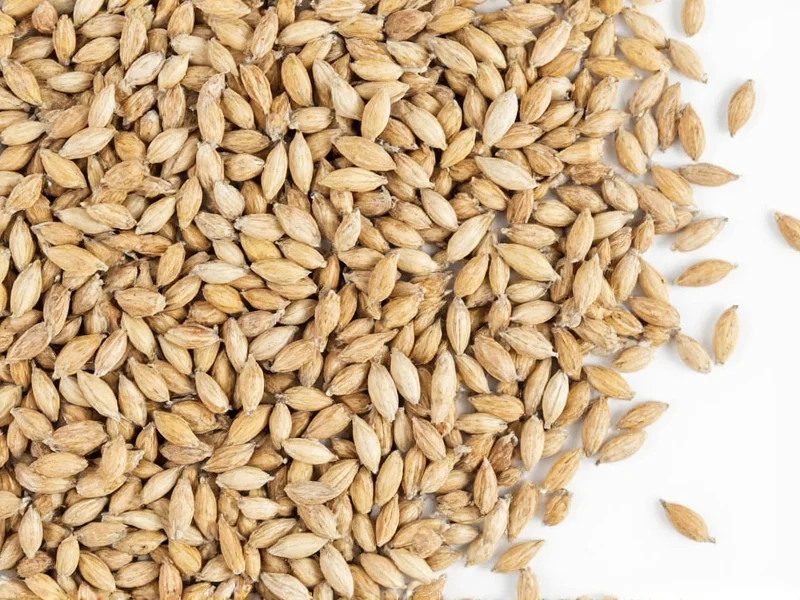These small crescent-shaped seeds from the Carum carvi plant have been valued for centuries across European and Middle Eastern cultures. Beyond their distinctive earthy, slightly sweet flavor with hints of citrus and pepper, caraway seeds offer practical applications that extend from your kitchen pantry to traditional wellness practices.
Culinary Applications of Caraway Seeds
Chefs and home cooks worldwide rely on caraway seeds for their unique flavor profile that enhances both savory and sweet dishes. The most iconic use appears in traditional German and Eastern European rye bread, where the seeds' warm aroma complements the dense, sourdough-based loaf. Without caraway, authentic pumpernickel or Jewish rye bread would lack their characteristic taste.
When cooking meats, particularly pork and goose, caraway seeds help cut through richness while adding complexity. They're essential in Central European dishes like goulash and sauerkraut, where they balance the tanginess of fermented cabbage. In Scandinavian cuisine, caraway features prominently in aquavit production and traditional potato pancakes.
| Dish Type | Recommended Usage | Flavor Pairings |
|---|---|---|
| Breads & Baked Goods | 1-2 tsp per loaf | Rye flour, molasses, fennel |
| Meat Dishes | 1 tsp crushed per pound of meat | Apples, onions, juniper berries |
| Vegetable Preparations | 1/2 tsp per serving | Cabbage, potatoes, carrots |
| Beverages | 1/4 tsp per cup | Lemon, honey, other spices |
Traditional Medicinal Uses and Evidence
Historically, caraway seed uses extended beyond the kitchen into traditional medicine cabinets. Herbalists commonly recommended caraway for digestive support, particularly for relieving bloating, gas, and indigestion. The seeds contain compounds like carvone and limonene that may help relax gastrointestinal muscles.
Modern research supports some traditional applications. A 2019 review in Phytotherapy Research noted caraway's potential benefits for digestive health, while laboratory studies suggest antimicrobial properties. However, most evidence remains preliminary, and caraway should complement rather than replace medical treatment for digestive conditions.
Nutritional Profile and Practical Usage Tips
Per tablespoon (6g), caraway seeds provide approximately 20 calories, 1g protein, 1.5g fiber, and notable amounts of iron (5% DV), magnesium (4% DV), and calcium (3% DV). They also contain antioxidants and phytochemicals that contribute to their health properties.
For maximum flavor impact, toast whole caraway seeds in a dry skillet for 1-2 minutes until fragrant before use. Store seeds in an airtight container away from light for up to six months. When substituting, fennel seeds offer a similar licorice note but with sweeter profile, while cumin provides earthiness without the citrus undertones.
Safety Considerations and Appropriate Usage
Caraway seeds are generally recognized as safe when consumed in typical culinary amounts. However, concentrated caraway oil or excessive consumption may cause allergic reactions in sensitive individuals, particularly those with existing sensitivities to plants in the Apiaceae family like celery or parsley.
Pregnant women should consume caraway in normal food quantities only, as medicinal doses might stimulate uterine activity. Those with gastroesophageal reflux disease (GERD) may want to monitor their tolerance, as caraway's digestive effects could potentially exacerbate symptoms in some individuals.
Practical Applications in Modern Cooking
Contemporary chefs continue finding innovative caraway seed uses that honor tradition while creating new flavor experiences. Try adding crushed seeds to roasted root vegetables, incorporating them into compound butter for grilled meats, or using them in apple-based desserts for unexpected complexity. The seeds work particularly well in dishes featuring beets, potatoes, and cabbage-family vegetables.
For beverage applications, steep caraway seeds with orange peel and cloves to create a warming winter tea, or infuse them into simple syrup for craft cocktails. Their versatility makes them valuable for anyone exploring global cuisines or seeking natural flavor enhancers without artificial additives.
Frequently Asked Questions
What are the primary culinary uses for caraway seeds?
Caraway seeds are most commonly used in rye bread baking, sauerkraut preparation, and European meat dishes like goulash. They enhance potato dishes, cabbage recipes, and certain cheese preparations. Their distinctive flavor also appears in Scandinavian aquavit and various traditional liqueurs.
Can caraway seeds help with digestion?
Traditional medicine has long used caraway seeds for digestive support, particularly for reducing bloating and gas. Scientific research suggests compounds in caraway may help relax gastrointestinal muscles, though most evidence comes from laboratory studies and small clinical trials. Consuming caraway in typical culinary amounts is generally safe for digestive health.
How should I store caraway seeds to maintain freshness?
Store whole caraway seeds in an airtight container away from light and heat. Properly stored, they maintain optimal flavor for 6-12 months. For extended freshness, keep them in the refrigerator or freezer. Ground caraway loses potency more quickly, so it's better to grind whole seeds as needed using a spice grinder or mortar and pestle.
What's the difference between caraway seeds and cumin seeds?
Though visually similar, caraway and cumin have distinct flavor profiles. Caraway offers a sweet, earthy taste with citrus notes, while cumin has a stronger, warmer, more pungent flavor. Botanically, they come from different plants - caraway from Carum carvi and cumin from Cuminum cyminum. They're used in different culinary traditions, with caraway prominent in European cooking and cumin in Middle Eastern, Indian, and Mexican cuisines.











 浙公网安备
33010002000092号
浙公网安备
33010002000092号 浙B2-20120091-4
浙B2-20120091-4